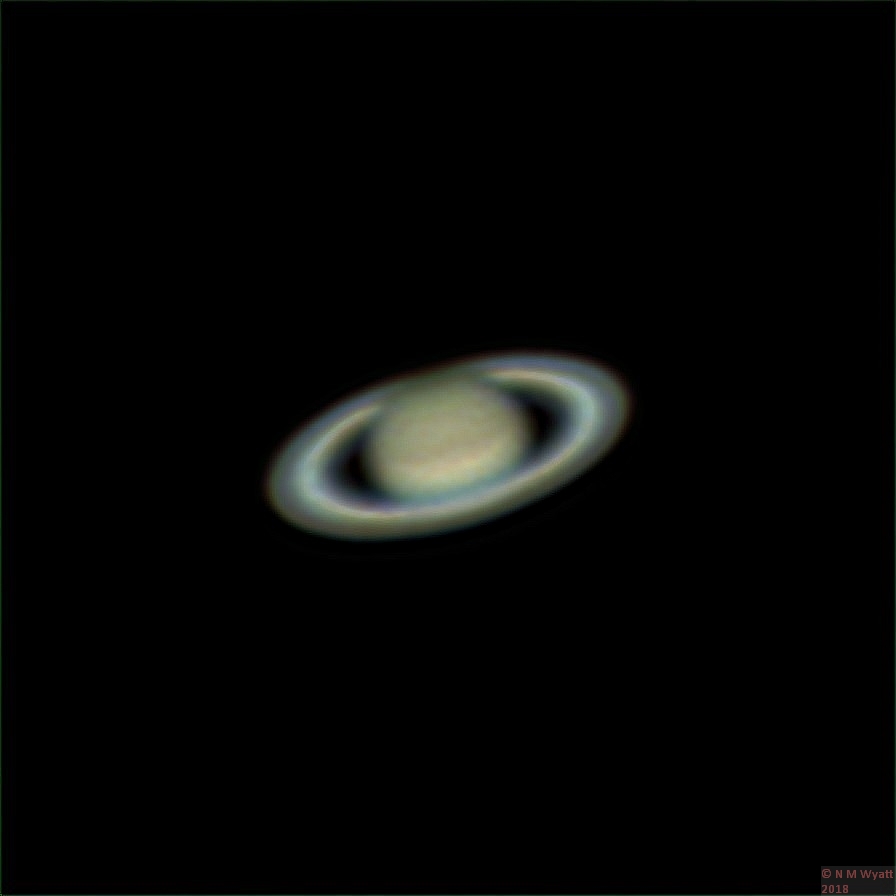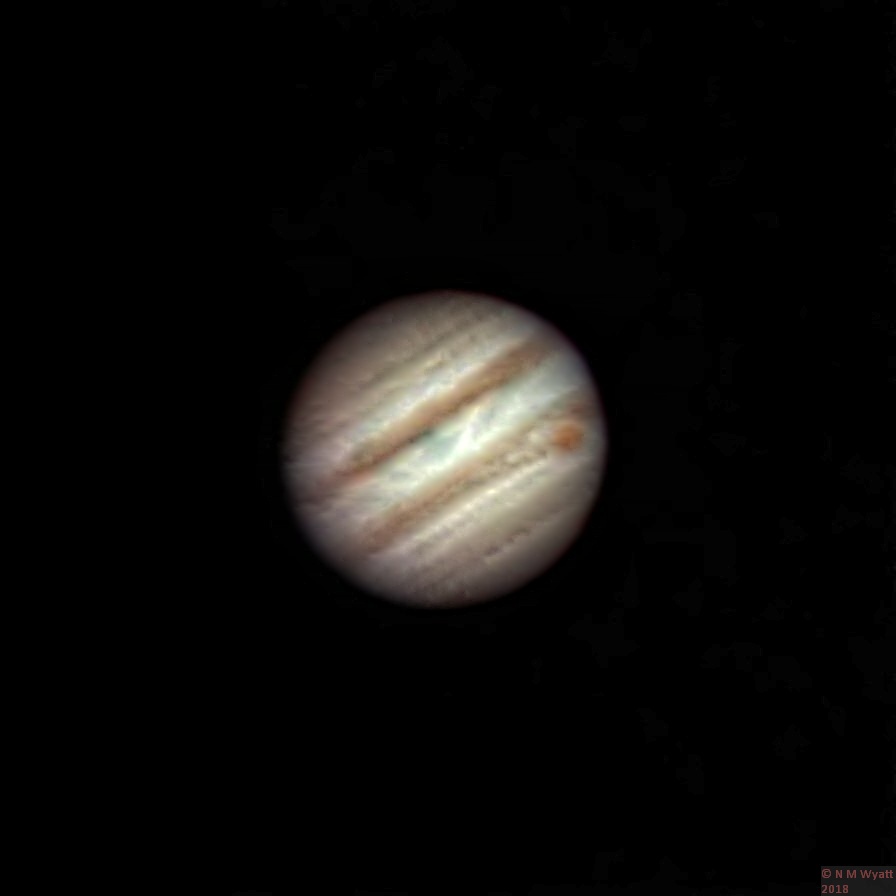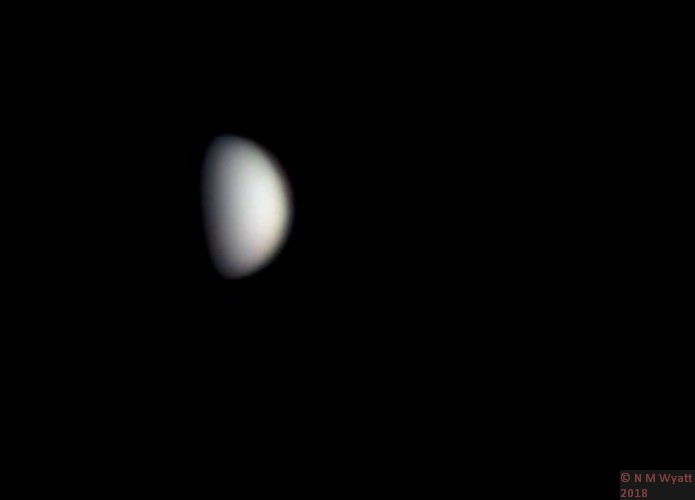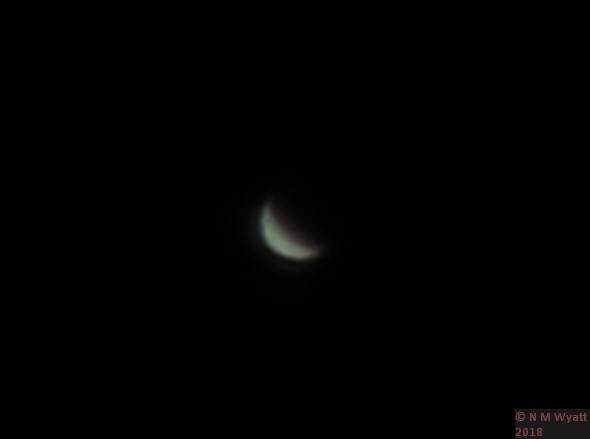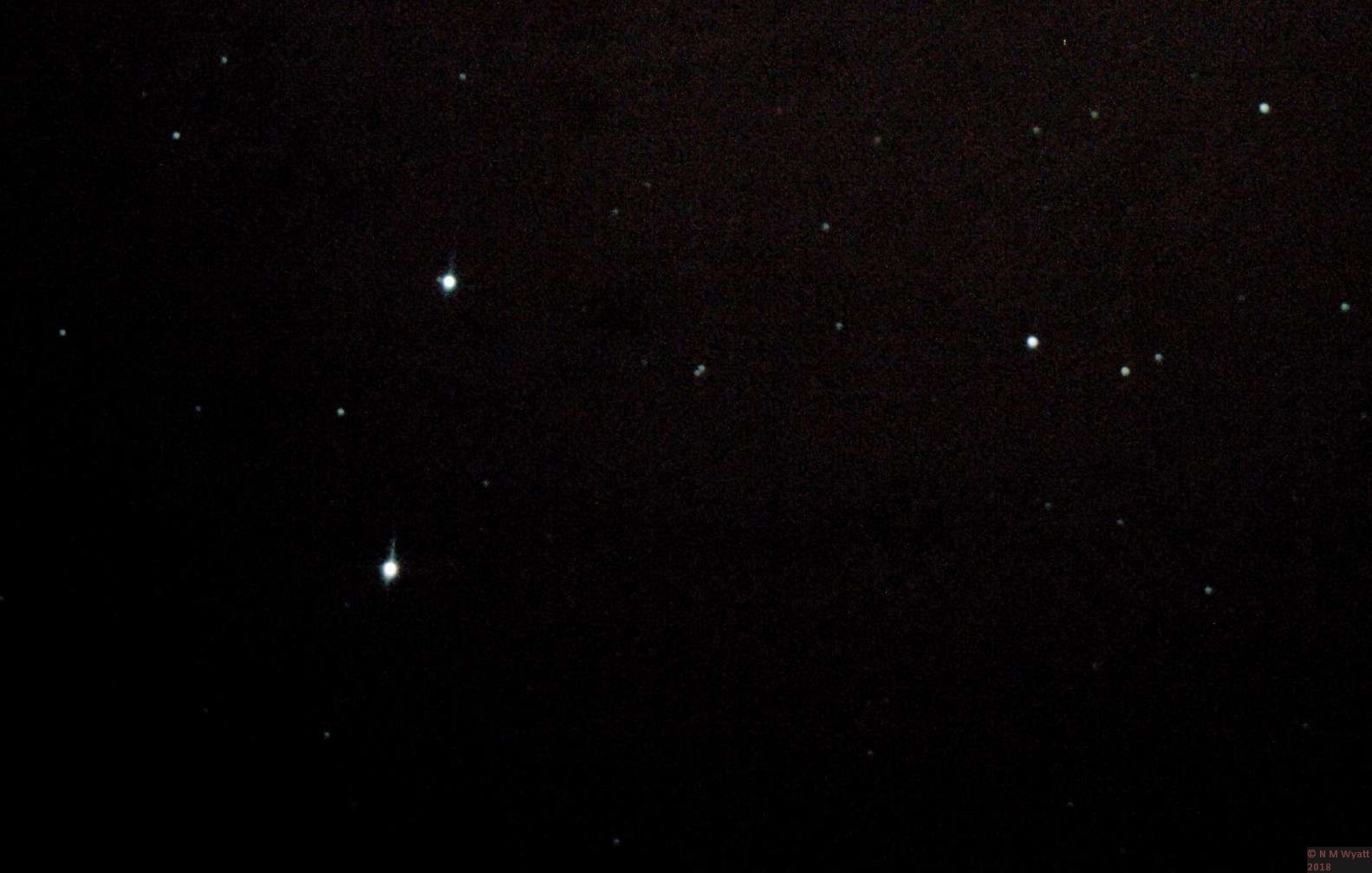The planets known the the ancients were Mercury, Venus, Mars, Jupiter and Saturn. Even a relatively modest telescope will bring these, Neptune and Uranus, and the moons of Jupiter and Saturn into your reach. A slightly larger scope can even be used to image Pluto or asteroids like Ceres and Vesta.
So, ignoring the fact that poor old Pluto got demoted to 'dwarf planet' status, there are eight planets we can photograph (plus earth, if you point your camera straight down!) This is my collection...
Triplanetary
Lets start with a composite shot, I'm particularly proud of this because Saturn and Mars were very low, less than 16 degrees above the horizon.
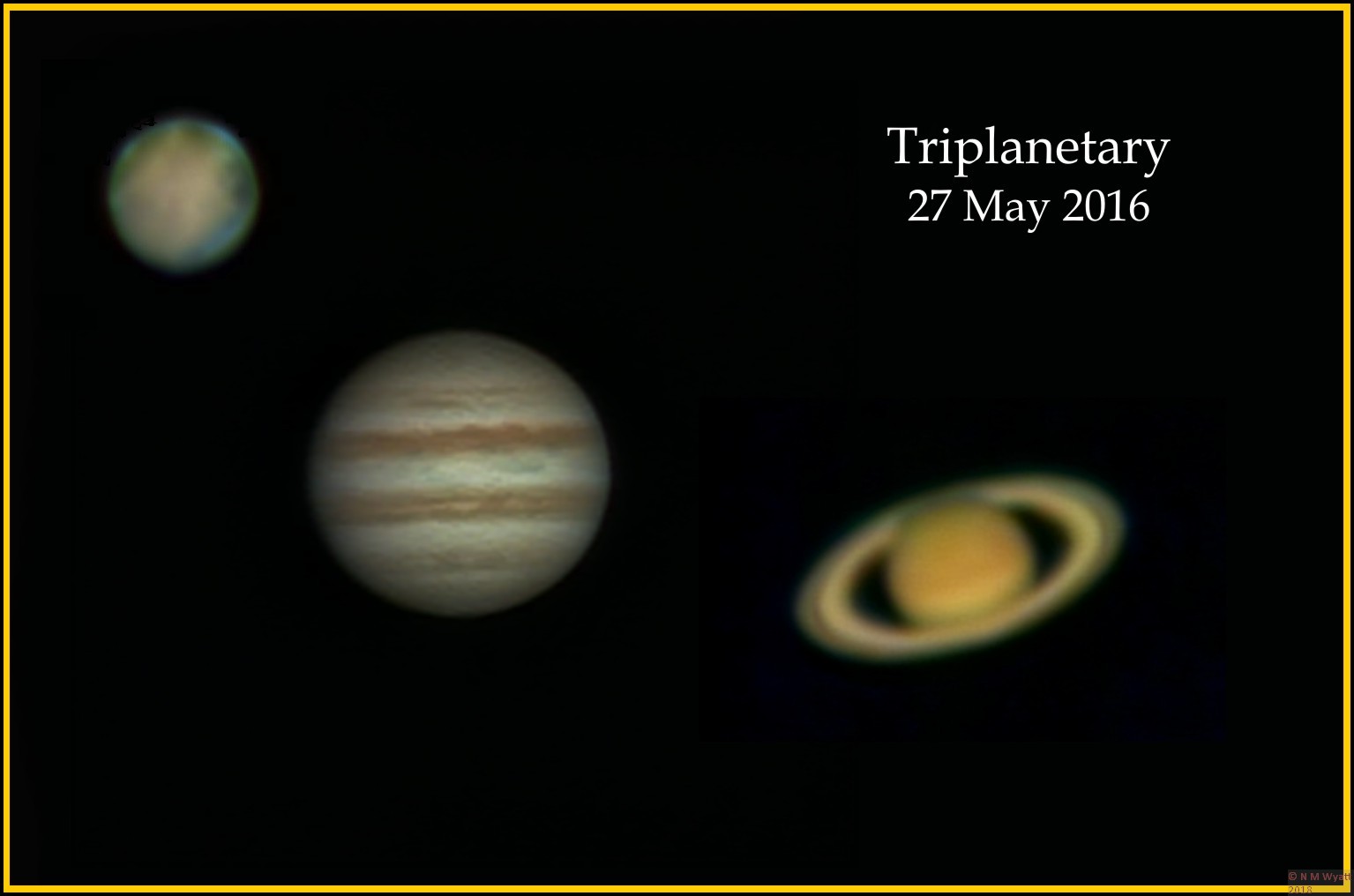
Saturn
Of all the sights in the sky, nothing is quite as big a surprise the first time you see it as Saturn and its rings. It really is like a shining jewel in the sky. The Voyager space probes discovered that the dull grey patch on 'top' is a hexagonal pattern of storms. Advances in imaging techniques mean that some amateurs have been able to image these storms!
Saturn, an image made by stacking the best of several minutes of video telescope footage.
Jupiter
Jupiter and its Red Spot. The spot is a storm bigger than the Earth, but many other swirling storms rage in the various coloured bands that race around this gas-giant. This image was taken with a cheap webcam fitted to the telescope in place of an eyepiece. An excellent program, Sharpcap, was used to capture the video.
Jupiter showing the red spot and cloud bands
More images of Jupiter and its moons
Mars
Much closer than jupiter, but also much smaller, Mars is a challenging target except when it is at its closest to Earth. This is the best I could do with a bridge camera and much stacking! It does show a bit of surface detail. Better things were in store for 2016!
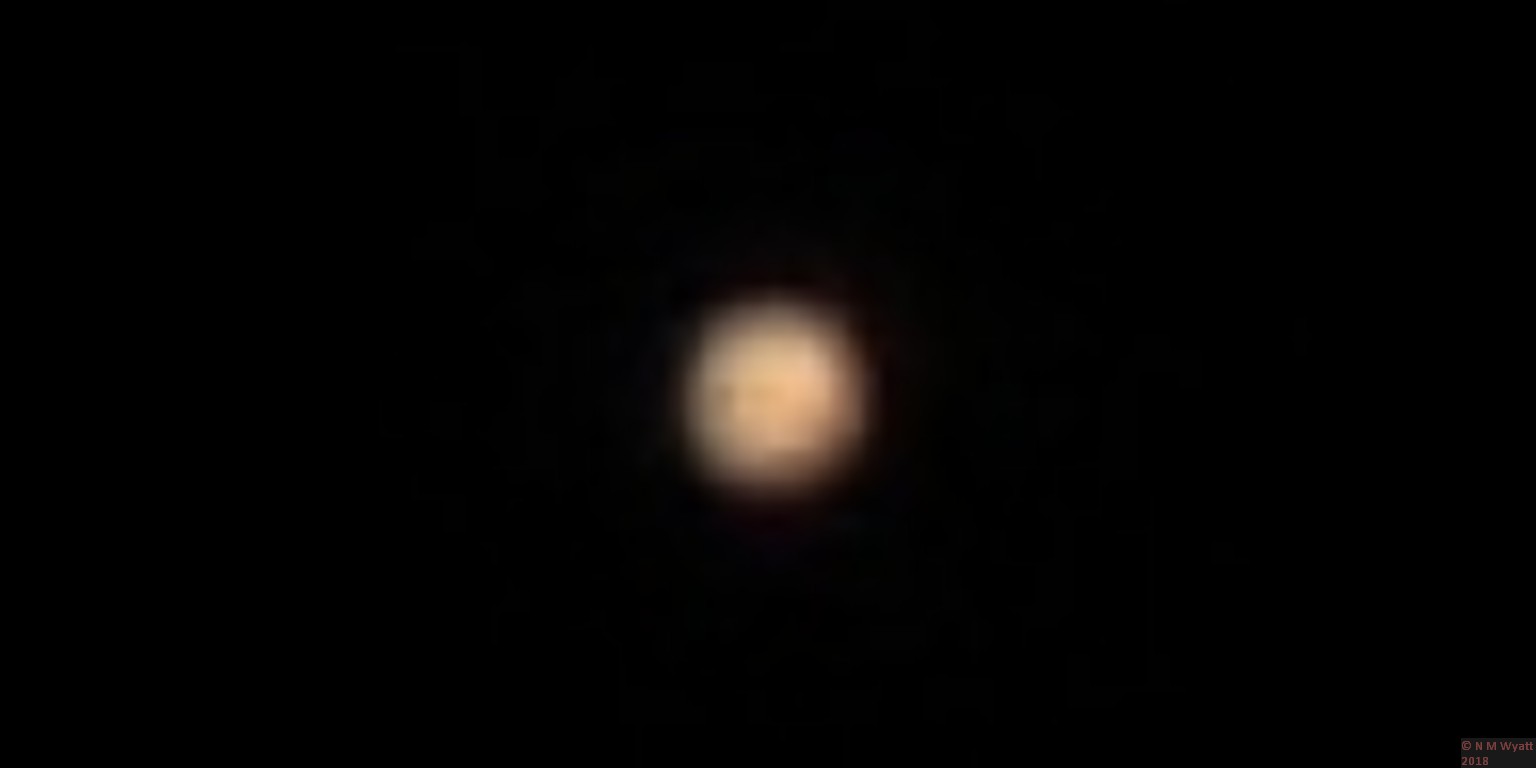
Mars, without much detail.
The clsoets approach of Mars in 2016 is in late May. This photo was taken in early may using Sharpcap and processed in registax. The evry low angle of the planet above the horizon made processing very hard.

Mars in 2016 showing much more detail. Muse fans will recognise the dark patch at upper left as Cydonia.
Mercury
Mercury is a challenge to image, small, bright but very close to the sun which means it is rarely seen in a truly dark sky. So far I have only got it as a few faint pixels, aside from this image of it passing in froint of the sun.
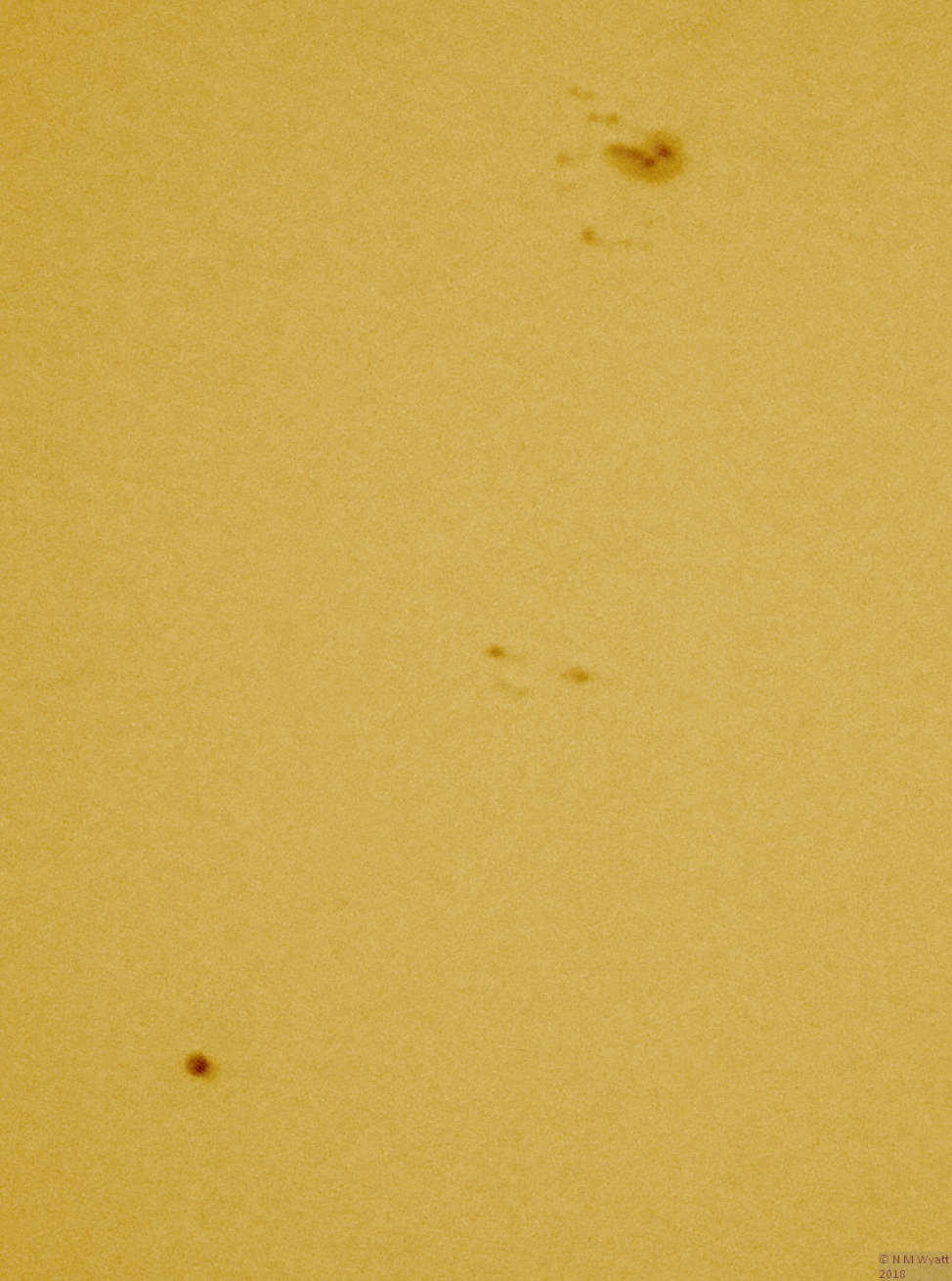
Mercury passing in front of the sun, the patches higher up are sunspots.
Venus
Venus is the second planet from the sun - but without its runaway greenhouse effect, it might have been a planet with much more in common with Earth. Its bright dense clouds make it easy to find, but a challenge to image. Others have had more success in capturing detail in the clouds than I have by using ultra-violet filters.
The hard part of imaging Venus is it is so bright!
As Venus is so bright, but lacks detail, it can be a rewarding subject for modest cameras. Take 37 pictures from a bridge camera, align them in PIPP, stack in Autostakkert!2 with x3 drizzle, and apply maximum entropy deconvolution in Astra, finally increase the saturation slightly in an image editor.
This image of Venus is a stack of 37 frames taken with a bridge camera
Uranus
Uranus is twenty times as far from the Sun as the Earth is, and is four times the diameter of Earth. In good conditions it is apparently possible to see it with the unaided eye, I certainly had no trouble seeing it through my finder scope so it was easier to 'catch' than Neptune. This is a stack of 47 images taken using an x2 barlow on my Skywatcher 150PL for an effective focal length of 2400mm. In infra-red light Uranus shows banding like Jupiter and Saturn, but in visible light it is a plain disk, even Voyager 2 could not discern any more detail than this in visible light!
Uranus shows little surface detail in visible light
Neptune
I'm thrilled to add Neptune to the tally, the eight planet from the sun and the farthest out if you don't count Pluto. In the eyepiece it was just a tiny blue dot. It's the one at the 'right angle' of the triangle of brighter stars in this shot. Look very closely and you should just be able to see its largest moon, Triton to the left of and almost 'touching' the planet.
Neptune and Triton close to the relatively faint stars HD214686 and HD214595 in Aquarius
Uranus and Mercury coming soon, I hope!

